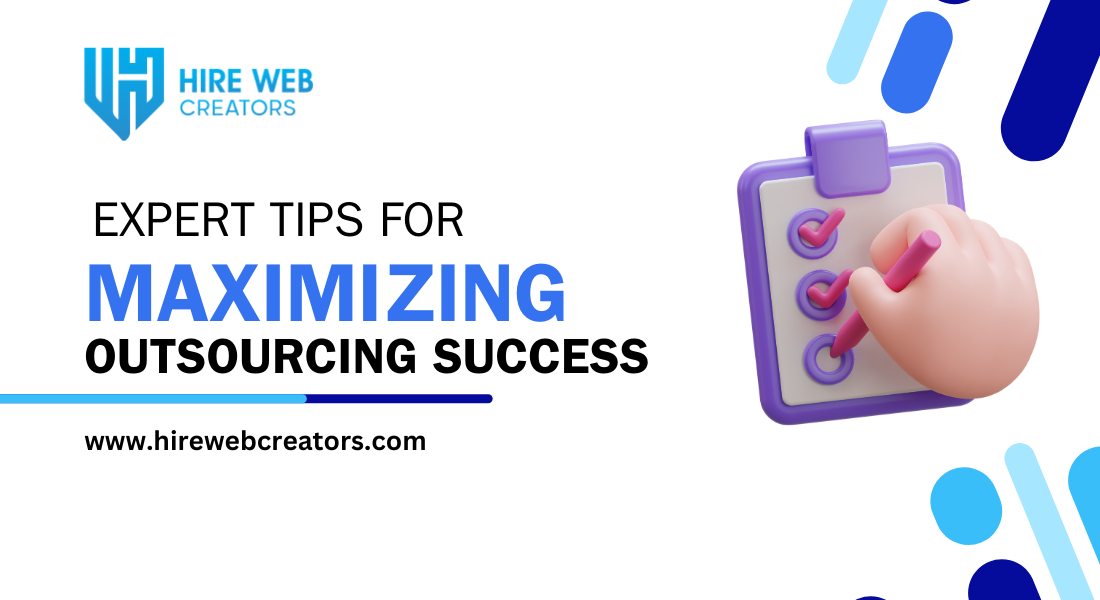

Why Do Companies Outsource Talent Acquisition
Outsourcing, the process of delegating specific business tasks or processes to external service providers, is a key strategy for modern organizations. In answering the question, “Why do companies outsource,“ it becomes evident that this approach streamlines operations, reduces costs, and helps businesses focus on core competencies.
This blog explores the core benefits of outsourcing, shedding light on why companies outsource and how they can leverage this strategy effectively. Understanding these advantages will help businesses make informed decisions to boost their operational performance and maintain a competitive edge in their respective markets.
What is Outsourcing? A Quick Overview
Strategic outsourcing refers to the process in which businesses transfer specific, relevant tasks, processes, or services to third-party agencies and allow themselves to benefit from their expertise while letting other firms handle their major competencies. In this way, companies can use the most optimal, scarce, and sometimes needed resources while cutting costs due to increased efficiency.
Several types of outsourcing cater to different business needs:
- IT Outsourcing: Encompasses software development, network management, technical support, and cybersecurity.
- HR Outsourcing: Covers recruitment, payroll processing, training, and benefits administration.
- Marketing Outsourcing: Includes content creation, social media management, digital advertising, and SEO services.
- Customer Service Outsourcing: Handles call centers, email support, and live chat services.
- Manufacturing Outsourcing: Involves production, assembly, and supply chain management
Outsourcing typically addresses businesses’ common pain points, such as in-house expertise, operational costs, and scalability. For instance, many companies struggle to afford a dedicated IT team due to the associated expense and complexity. Therefore, outsourcing IT functions allows them to easily access cutting-edge technology and expert support without the need to hire and train additional staff. Similarly, outsourcing customer service ensures businesses can provide round-the-clock support, thus improving customer satisfaction and retention.
Furthermore, outsourcing solutions not only reduce costs but also enable companies to focus on their core activities. Additionally, this approach fosters operational efficiency while addressing critical business challenges effectively.
Through the effective tackling of these challenges, outsourcing has emerged as an essential business tool in helping companies improve performance, minimize risks, and adapt to changing market landscapes.
The Top 8 Business Benefits of Outsourcing
Cost Savings Without Compromising Quality
Outsourcing is a well-known strategy for businesses that want to cut costs without sacrificing quality. Transferring tasks to regions with lower labor expenses or to specialized providers helps reduce overheads while maintaining high-performance standards. Savings allow organizations to reinvest in growth and innovation.
- Reduces labor costs by outsourcing tasks like customer service to cost-effective regions.
- Saves on infrastructure and operational expenses, such as office space and equipment.
- Provides a cost-effective alternative to hiring and training in-house staff for non-core functions.
Access to Specialized Expertise
Outsourcing unlocks a talent pool worldwide for businesses to partner with industry-specific experts and niche specialists. This means that projects get executed with great precision and cutting-edge insights, raising the outcomes and innovation.
- Collaborate with experts in fields like IT, marketing, or legal services.
- Gain specialized knowledge that may not be available internally.
- Ensure high-quality results through industry-specific expertise.
Focus on Core Business Activities
With non-core activities delegated through outsourcing, businesses can dedicate their time and resources toward strategic priorities. Relying on routine tasks allows leadership teams to focus on innovation, growth, and improvements in customer experience.
- Frees up internal teams to focus on high-impact projects.
- Reduces distractions from administrative or repetitive tasks.
- Allows leadership to invest energy in core areas like product development or customer engagement.
Increased Efficiency and Productivity
Outsourcing improves the business’s operational workflow by delegating tasks to specialists who can handle them better. This means faster delivery times, fewer errors, and better resource allocation, leading to higher productivity.
- Streamlines processes by outsourcing repetitive tasks like data entry.
- Enhances accuracy and reduces delays with experienced providers.
- Speeds up project timelines without overburdening internal teams.
Scalability and Flexibility
In an unpredictable market, the ability to scale operations quickly is vital. Outsourcing offers businesses the flexibility to adjust services or staffing levels as needed, without the risk of overcommitment.
- Scale customer service during peak seasons or promotions.
- Add or reduce outsourced functions based on demand fluctuations.
- Avoid long-term commitments while still meeting business needs.
Risk Mitigation Through Shared Responsibility
Outsourcing reduces risks by delegating certain functions to experts who are aware of the compliance and operational issues. Shared responsibility will, therefore, increase the accuracy and compliance with regulations, reducing the burden on internal teams.
- Outsource payroll processing to avoid tax errors and compliance issues.
- Reduce operational risks by relying on experienced providers.
- Ensure data security and regulatory compliance through trusted outsourcing partners.
Access to Advanced Technologies
Technology is at the heart of modern business, but investment in the latest tools is costly and complex. Outsourcing gives businesses access to advanced technologies without heavy upfront investments, keeping them ahead of the curve.
- Leverage cutting-edge tools through outsourced IT or cloud services.
- Stay competitive without the need for in-house tech expertise.
- Drive innovation with access to emerging technologies.
Enhanced Competitive Advantage
By streamlining operations and leveraging external expertise, businesses can focus on innovation and market leadership. Outsourcing helps accelerate time-to-market and maintain a competitive edge in an ever-changing business environment.
- Outsource R&D to speed up product development cycles.
- Stay ahead of competitors with enhanced efficiency and agility.
- Focus internal resources on growth and market differentiation.
This combination of engaging narratives and clear, bulleted points ensures that each benefit is accessible and compelling, making it easy for readers to digest and apply the insights.
Real-World Examples of Successful Outsourcing
Outsourcing has empowered businesses across industries to overcome challenges and achieve remarkable results. Here are three concise examples showcasing its transformative impact:
Scaling Customer Support for a Startup:
A growing e-commerce startup outsourced customer support to handle a surge in inquiries. This move enabled 24/7 service, reduced response times to under 2 hours, and boosted customer satisfaction by 35%, all while freeing internal resources for growth initiatives.
Reducing Manufacturing Costs:
An electronics company outsourced production to a cost-effective region, cutting manufacturing expenses by 40%. The savings were reinvested in R&D, resulting in faster product launches and greater market competitiveness.
Accessing Advanced Technology:
A financial services company collaborated with an IT outsourcing provider to transition operations to the cloud. This cut down infrastructure costs by 30%, improved the security of data, and availed state-of-the-art technologies for scalability and innovation.
These examples highlight how outsourcing drives cost efficiency, operational scalability, and technological advancement, proving its value as a strategic growth tool for businesses.
Core Principles for Effective Outsourcing
Successful outsourcing starts with strategic planning and clear execution. The best areas to outsource are repetitive, time-consuming, or specialized expertise like payroll, IT management, or customer support. Always retain your core competencies in-house to protect your company’s unique strengths.
When selecting an outsourcing partner, prioritize experience, scalability, and alignment with your business values. Conduct thorough due diligence to assess the provider’s expertise and reputation, ensuring they can adapt to your needs and deliver quality results. Open communication and shared performance metrics are crucial for maintaining alignment and transparency.
Quick Tips:
- Do: Define clear goals, set measurable KPIs, and foster collaboration.
- Don’t: Outsource critical core functions or skip thorough vendor evaluation.
By following these principles, businesses can build successful partnerships that enhance efficiency, foster innovation, and drive growth.
Step-by-Step Guide: How to Get Started with Outsourcing
Outsourcing can transform your business, but starting on the right foot is essential. Here’s a concise, step-by-step guide to help you navigate the process effectively.
Step 1: Assess Your Business Needs and Goals
Define what you are trying to achieve by outsourcing, be it cost reduction, efficiency improvement, or access to expertise. Identify pain points or areas where external support could add value.
Step 2: Identify Tasks or Departments to Outsource
Focus on non-core functions or tasks that require specialized skills. Examples include IT support, payroll processing, and customer service. Retain strategic activities that define your brand or directly impact your competitive edge.
Step 3: Research and Evaluate Potential Partners
Search for vendors with expertise in your chosen area. Review their track record, scalability, and alignment with your business culture. Ensure that they are credible by referencing their work, client reviews, and case studies.
Step 4: Establish Clear Contracts and Communication Protocols
Set clear expectations, define deliverables, and outline performance metrics in your contracts. Establish regular communication channels and reporting schedules to ensure ongoing alignment and transparency.
Step 5: Monitor Performance and Measure ROI
Continuously track performance against the agreed KPIs. Regularly review the partnership’s impact on your business goals, adjusting the arrangement as needed to maximize ROI.
With these steps, businesses can confidently initiate outsourcing, ensuring a smooth transition and long-term success.
Expert Tips for Maximizing Outsourcing Success
Outsourcing can be a game-changer for businesses, but ensuring success requires a strategic approach. Experts emphasize that communication, quality assurance, and leveraging the right tools are crucial to building strong outsourcing partnerships.
According to Deloitte, 88% of companies outsource to focus on core functions; however, this will only work if the goals are aligned and transparency is maintained. Management consultant Peter Drucker famously said, “Do what you do best, and outsource the rest.” This philosophy underscores the need for clarity in choosing tasks to delegate and fostering trust with external teams.
Quality is consistently maintained from the outset by setting clear expectations. Additionally, measurable performance indicators (KPIs) ensure regular reviews and deliver consistent results. Furthermore, tools like Trello and Monday.com streamline project tracking, while Hubstaff tracks time and productivity efficiently. Moreover, Slack for instant messaging and Zoom for virtual meetings help teams stay aligned, resolving issues before they escalate into significant problems.
For effective collaboration, it is essential to integrate your outsourcing partners into your company culture. Therefore, sharing your mission, values, and long-term goals fosters a sense of ownership and alignment. In addition, regular feedback loops, along with recognition for achievements, significantly strengthen the relationship.
To maintain a competitive advantage, monitoring industry trends is crucial. For instance, research studies reveal that businesses increasingly outsource to access advanced technologies and specialized expertise. In addition, managing outsourced teams has become easier and more efficient with tools like Notion for documentation and Google Workspace for real-time collaboration.
In conclusion, expert insights, coupled with high standards and cutting-edge tools, ensure that outsourcing transforms into a wellspring of sustainable growth and innovation.
Common Challenges and How to Overcome Them
While outsourcing has many benefits, it is not without its drawbacks. From loss of control to cultural differences, businesses should be proactive in overcoming obstacles to ensure that their partnership is successful.
Loss of Control
One of the very common concerns is that outsiders are going to lose control when they outsource certain kinds of tasks or processes. When a company sends such critical operations to outside groups, there is uncertainty over outcomes and quality. This should, therefore, be minimized and addressed by clear expectations followed by regular oversight. Come up with performance metrics and routine reviews in place, and use tools like Trello or Asana to keep up with real-time project completion.
Cultural Differences
The main obstacles would be cultural and language barriers since teams in other countries usually don’t share the same type of business culture as outsourcing clients. The best way to overcome this challenge is when choosing a partner that reflects a deep understanding of a company’s business culture, then training or onboarding materials can help fill some gaps. Encouraging mutual respect and open communication can create a more cohesive work relationship.
Communication Issues
Breakdowns in communication can derail even the best-planned outsourcing strategies. Differences in time zones unclear instructions and inconsistent updates might delay or cause misunderstandings. Therefore, establish your regular communication schedule and then use tools like Slack to get instant messaging and have weekly check-ins with tools like Zoom. Designate a single point of contact to avoid confusion and ensure less repetition of discussions.
Quality Assurance Concerns
Businesses often fear that outsourcing might compromise quality. However, this concern can be effectively mitigated by fully vetting potential partners and starting small with pilot projects to evaluate their capabilities. Additionally, feedback plays a crucial role, while a strong emphasis on measurable deliverables further ensures consistency in meeting the required standards.
Moreover, by recognizing and proactively addressing these challenges, businesses can build strong and collaborative outsourcing relationships. Furthermore, this approach not only delivers reliable and high-quality results but also fosters long-term success. The key lies in careful planning, clear communication, and fostering a mutual understanding with outsourcing partners.
In Conclusion,
Outsourcing can offer the best benefits for businesses: cost reduction, access to specialized expertise, efficiency improvement, and scalability. This is an opportunity for business leaders to focus on core strengths and outsource other tasks to trusted experts. With the right strategy, outsourcing can become a potent growth engine, source of innovation, and competitive advantage.
With clear planning, proper tools, and a focus on collaboration, issues related to communication or cultural differences are quite manageable. Such careful outsourcing can ensure the quality outcome of the desired result while strengthening your partnership and ultimately setting up your business for long-term success.
The key to success starts with a clear understanding of your needs and goals, particularly when considering why do companies outsource certain tasks. By establishing which processes can be outsourced to maximize value, businesses can better position themselves for growth. But why do companies outsource in the first place? It often comes down to efficiency and selecting the right partner to ensure success. Taking the first step with care makes outsourcing not just a strategy but a cornerstone of your business, answering the pivotal question: why do companies outsource as a means to deliver measurable outcomes and a stronger foundation for the future?
Ready to unlock the potential of outsourcing? Take the first step toward growth and innovation with a strategy tailored to your business goals.




